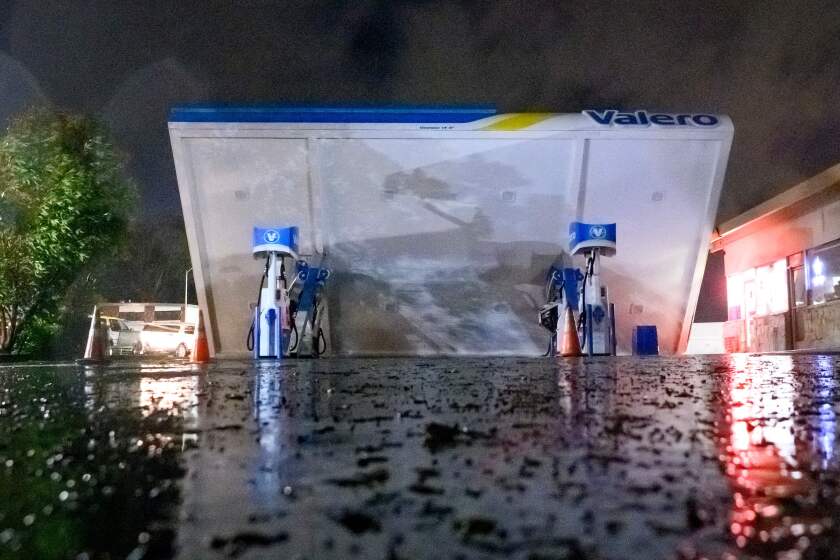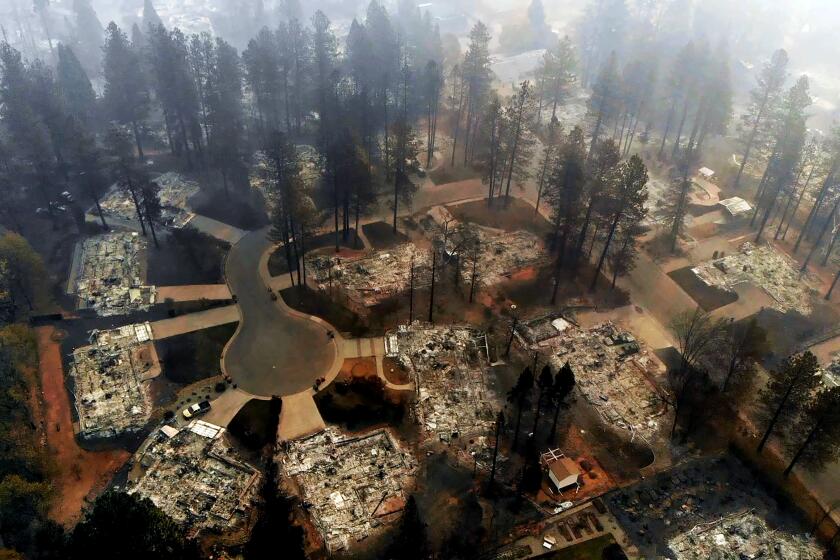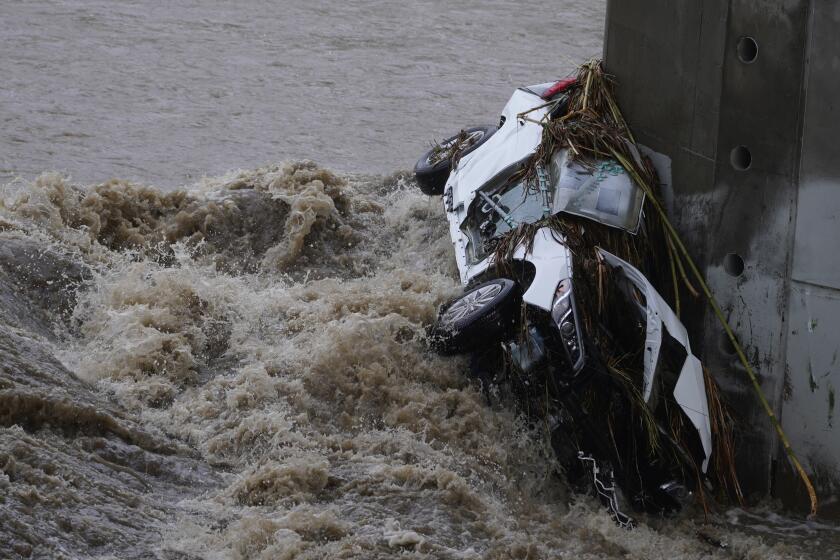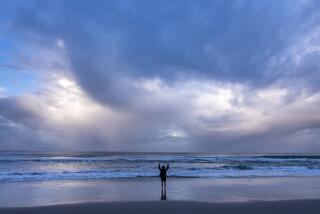Editorial: The drought is over now, right? (Spoiler alert: No)
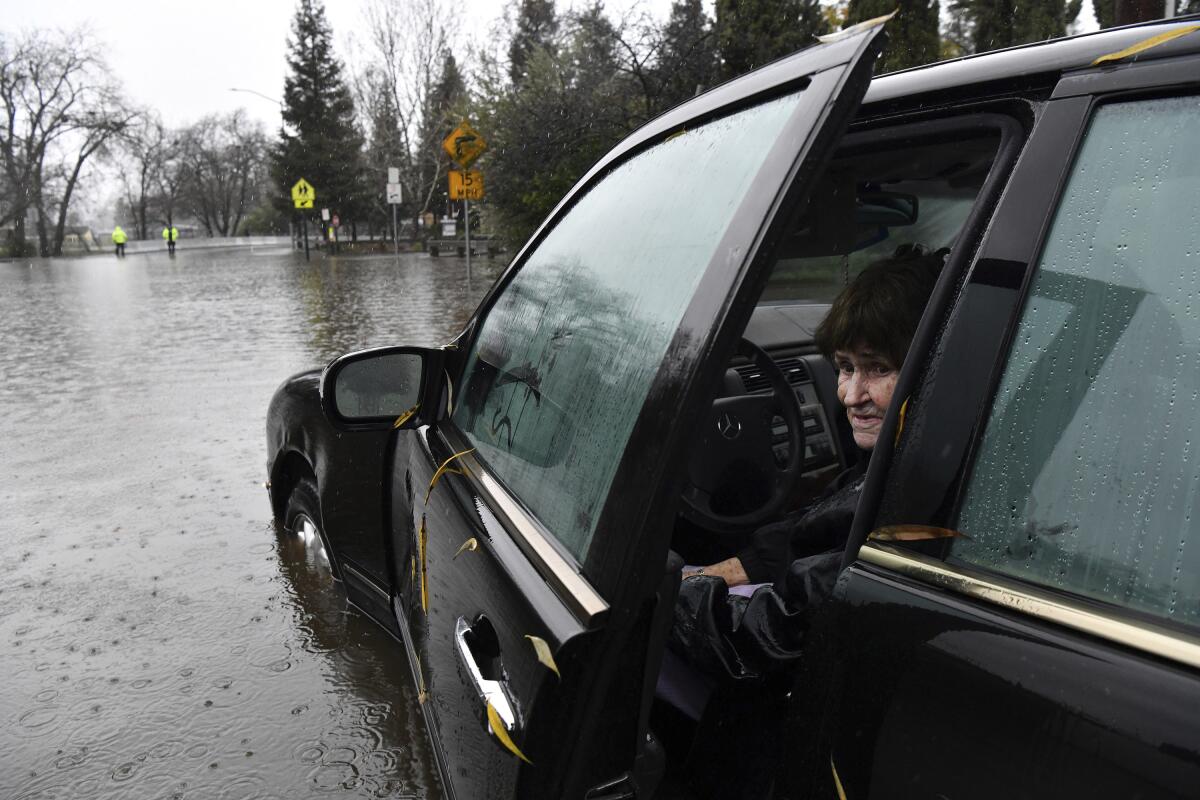
The storms keep coming, one after another after another, like a series of fire-hose blasts so relentless that meteorologists use terms like “atmospheric river,” “bomb cyclone” and “bombogenesis.” What happened to our formerly gentle old winter visitor, the “pineapple express”? Cities and highways have flooded in Northern California, and the Sierra Nevada snowpack measured at 174% of the historical average for this point in the year. And that was even before the current storm.
And still, the experts insist that we remain in the midst of a record-breaking four-year drought. Are they just mean?
Unfortunately, the experts have data on their side. Living in California in the 21st century means simultaneously dealing with downpours and severe water shortages.
The intense downpours — coming after an earlier deluge days ago — pushed some rivers toward flood stage, prompting a string of evacuations from towns along the Russian River to communities in Santa Cruz County and beyond.
Just a year ago, December storms appeared to have heralded a wet 2022, but by January the rain and snow had stopped and never picked up again. Flooding was followed just a few weeks later with emergency drought orders that sharply limited water use, first in the northern part of the state and ultimately in Los Angeles as well.
This winter’s precipitation, currently running above average, could shut off again. We’ll need additional storms (with or without bombogenesis) in February and March in order to meet annual precipitation averages.
So if we get those, then can we say the drought is over?
Alas, no. We’ve been running a water deficit for so long, due to a succession of extremely dry years, that average rainfall and snowfall won’t cut it. Even double the normal rain and snow won’t be enough to lift us out of drought. We need to recoup a portion of what we didn’t get each year since the wet winter of 2017, when Californians last exulted that the dry times were done.
If ‘drought’ means a period of dry years followed by a return to the norm, California is not in drought. The current climate is the norm.
And what if we do get a 2017-type winter, a season so wet that the reservoirs all fill to the brim as they did then? Can we then rest easy?
No, because the amount of moisture that falls from the sky is only part of the formula. We need cold mountain temperatures, too, persisting at least through March, to maintain the Sierra snowpack that accounts for at least a third of the state’s water storage capacity. A couple of winter heat waves, like the one that’s currently baking Europeans and leaving the Alps nearly bare of new snow, could quickly deplete an entire winter’s worth of stored snowfall.
Instead of melting at a steady pace and flowing into rivers and aqueducts through the summer, when farmers and city dwellers need it most, warm temperatures could liquefy the snowpack and send it downstream in the winter, all at once, when the reservoirs are already full and the fields and streets are already flooded. Or worse, it could just evaporate off the mountainsides into an oven-like sky, leaving the ground beneath it as dry as if the snow had never been there. That’s what California’s last several winters have been like.
Southern California needs to capture and reuse more of its rainfall while Northern California needs to keep more of it flowing to the sea.
But let’s suppose everything goes our way, that the precipitation keeps coming through January and February, in above-average but manageable doses, to minimize the landslides and flooding while filling the reservoirs and restoring the groundwater. And suppose Sierra temperatures stay cold so that much of that water falls as snow and stays that way until springtime.
We might then be able to say that the drought that followed the wet winter of 2017 is truly over.
Remember, though, that 2017 also followed an extended drought. That year — and this year, and the wet winter of 2011 — may simply be wet breaks in an extended era of aridity.
In fact, what we’re experiencing may not be a drought at all, in the sense that the amount of water that falls on California in any given decade really hasn’t changed much. What has changed is that rain and snow now come on a less predictable schedule, leaving living patterns, industries, infrastructure and laws we created during the 20th century less suited for the realities of the 21st. We emerge from drought when we restore floodplains, so that excess runoff can seep down to restore depleted aquifers, improve our technology to limit waste, update our laws to apportion our most precious resource more wisely and take other steps to reorient ourselves and society to fit the new way Mother Nature sends us water.
More to Read
A cure for the common opinion
Get thought-provoking perspectives with our weekly newsletter.
You may occasionally receive promotional content from the Los Angeles Times.
